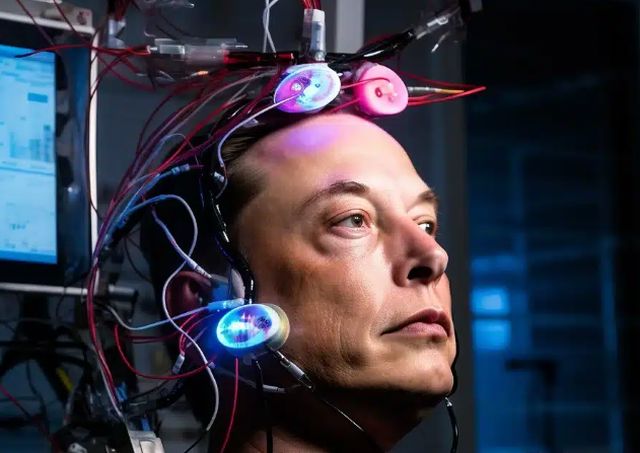Legal and Regulatory Challenges for Neuralink
Legal and Regulatory Challenges for Neuralink
Neuralink, the ambitious brain-computer interface (BCI) company founded by Elon Musk, is pushing the boundaries of neurotechnology. With a mission to merge human cognition with artificial intelligence, Neuralink aims to treat neurological disorders, enhance human capabilities, and even pave the way for a symbiotic relationship between humans and machines. However, as groundbreaking as this vision may be, the path to widespread adoption is fraught with legal and regulatory challenges. From securing FDA approval to navigating ethical dilemmas and international laws, Neuralink faces a complex web of hurdles that could shape its future—and the future of neurotechnology as a whole.
In this article, we’ll dive deep into the legal challenges and regulatory obstacles Neuralink must overcome, exploring how these factors impact its development, clinical trials, and eventual commercialization. Whether you’re a tech enthusiast or simply curious about the intersection of law and innovation, this piece will shed light on the critical issues at play.
What is Neuralink, and Why Does It Matter?
Before delving into the challenges, let’s recap what Neuralink is all about. Founded in 2016, Neuralink is developing implantable brain-computer interfaces that connect the human brain directly to computers. These devices, which involve tiny electrodes inserted into the brain, could potentially treat conditions like paralysis, epilepsy, and depression by stimulating or recording neural activity. Beyond medical applications, Neuralink envisions a future where BCIs enhance memory, communication, and even intelligence—think downloading skills like in The Matrix.
This dual-purpose mission—therapeutic and augmentative—sets Neuralink apart from other neurotechnology companies. However, it also amplifies the regulatory challenges and legal scrutiny the company faces. A device that can both heal and enhance raises unique questions about safety, consent, and societal impact, making the regulatory landscape far more complex than for traditional medical devices.
The FDA Approval Process: A Major Regulatory Hurdle
One of the most immediate regulatory challenges for Neuralink is gaining approval from the U.S. Food and Drug Administration (FDA). The FDA oversees medical devices in the United States, and Neuralink’s BCI falls under this category. To bring its technology to market, Neuralink must navigate the FDA’s rigorous approval process, which includes preclinical testing, clinical trials, and a final review.
Preclinical Testing and Animal Trials
Before human trials can begin, Neuralink must demonstrate that its device is safe and effective in animal models. The company has conducted experiments on pigs and monkeys, showcasing abilities like controlling a computer cursor with brain signals. However, these trials have not been without controversy. In 2022, reports emerged alleging that Neuralink’s animal testing practices may have violated ethical standards, with claims of unnecessary suffering. While Neuralink denied these allegations, such incidents highlight the legal challenges surrounding animal welfare laws, such as the U.S. Animal Welfare Act, and could delay FDA clearance if regulators demand further investigation.
Human Clinical Trials
In May 2023, Neuralink received FDA approval to begin its first human clinical trials—a significant milestone. These trials, aimed at patients with severe neurological conditions like quadriplegia, test the safety and efficacy of the implant. However, clinical trials come with their own regulatory challenges. The FDA requires strict oversight of patient recruitment, informed consent, and adverse event reporting. Any misstep—such as inadequate monitoring or unexpected side effects—could halt the trials or push back approval timelines.
Post-Approval Oversight
Even if Neuralink secures FDA approval, the regulatory journey doesn’t end. The FDA imposes ongoing requirements, such as post-market surveillance, to monitor long-term safety. Given the invasive nature of Neuralink’s implants, regulators will likely scrutinize issues like infection risks, device malfunctions, or unintended cognitive effects. This continuous oversight adds another layer of complexity to Neuralink’s path forward.
Ethical Concerns and Legal Implications
Beyond FDA approval, Neuralink’s technology raises profound ethical concerns that intersect with legal frameworks. These issues could spark lawsuits, public backlash, or new legislation, all of which pose legal challenges for the company.
Informed Consent
A cornerstone of medical ethics and law, informed consent requires that patients fully understand the risks and benefits of a procedure. With Neuralink, this is no small feat. How do you explain the potential of a brain implant that could alter cognition or behavior? If patients experience unforeseen psychological effects—like personality changes—could Neuralink face lawsuits claiming inadequate disclosure? Legal precedents in medical device litigation suggest that consent-related disputes could become a significant hurdle.
Privacy and Data Security
Neuralink’s BCI collects sensitive neural data, raising questions about privacy. Who owns this data—the patient, Neuralink, or a third party? Could it be hacked, sold, or used without consent? In the U.S., laws like the Health Insurance Portability and Accountability Act (HIPAA) protect medical information, but neural data may fall into a gray area. Internationally, the European Union’s General Data Protection Regulation (GDPR) imposes even stricter standards. A data breach could lead to legal challenges, hefty fines, and reputational damage for Neuralink.
Equity and Access
If Neuralink’s technology becomes a cognitive enhancer, who gets access? High costs could limit it to the wealthy, exacerbating social inequalities. While not a direct legal issue, this ethical concern could prompt regulators or lawmakers to intervene, imposing restrictions or subsidies that affect Neuralink’s business model.
International Regulatory Variations
Neuralink’s global ambitions introduce another layer of regulatory challenges. Each country has its own framework for approving medical devices and addressing neurotechnology. For example:
- European Union: The EU’s Medical Device Regulation (MDR) is notoriously stringent, requiring extensive clinical evidence and post-market monitoring. Neuralink would need to adapt its approach to meet these standards.
- China: While China is a leader in neurotech research, its regulatory process is opaque and heavily influenced by state priorities, which could complicate Neuralink’s entry.
- Developing Nations: In regions with weaker regulatory systems, Neuralink might face fewer hurdles but could encounter ethical criticism for exploiting lax oversight.
Harmonizing these diverse requirements is a logistical and legal challenge that could slow Neuralink’s international rollout.
Intellectual Property and Patent Disputes
As a pioneer in brain-computer interfaces, Neuralink holds valuable intellectual property (IP). However, this also makes it a target for legal challenges in the form of patent disputes. Competitors like Blackrock Neurotech or Synchron, which are also developing BCIs, could claim overlapping technologies, leading to costly litigation. Defending its IP—or challenging others’—will require significant resources and could delay product development.
Moreover, if Neuralink’s patents are too broad, regulators or courts might deem them anti-competitive, inviting antitrust scrutiny. Balancing innovation with legal defensibility is a tightrope the company must walk.
Public Perception and Legislative Pushback
Public opinion can influence both legal and regulatory landscapes. Neuralink’s futuristic goals—merging humans with AI—may inspire awe in some and fear in others. Critics warn of “mind control” or dystopian outcomes, which could fuel legislative pushback. For instance, lawmakers might propose bans on non-therapeutic BCIs, citing safety or ethical risks. In 2021, Chile became the first country to enshrine “neuro-rights” in its constitution, protecting brain data and mental privacy. If similar laws spread, Neuralink could face a patchwork of restrictions that complicate its mission.
The Road Ahead for Neuralink
The legal and regulatory challenges facing Neuralink are formidable, but not insurmountable. Securing FDA approval, addressing ethical concerns, and navigating international laws will require a proactive strategy. Collaborating with regulators, investing in robust safety data, and engaging the public could smooth the path forward. Elon Musk’s track record with Tesla and SpaceX suggests that Neuralink has the tenacity to tackle these hurdles, but the stakes are higher when dealing with the human brain.
For now, Neuralink’s success hinges on proving that its technology is not only revolutionary but also safe, ethical, and legally sound. As clinical trials progress and the company refines its approach, the world will be watching—regulators included.
Conclusion
Neuralink stands at the forefront of a neurotechnology revolution, but its journey is far from straightforward. The legal challenges of informed consent, privacy, and IP disputes, combined with regulatory challenges like FDA approval and international compliance, create a complex landscape. These obstacles are not just bureaucratic hoops—they reflect deeper questions about how society governs innovation at the edge of human potential.
What do you think? Are these challenges a necessary safeguard, or do they stifle progress? Share your thoughts in the comments below, and stay tuned to usaneuralink.com for more insights into Neuralink’s groundbreaking work.
Share this content:























Post Comment